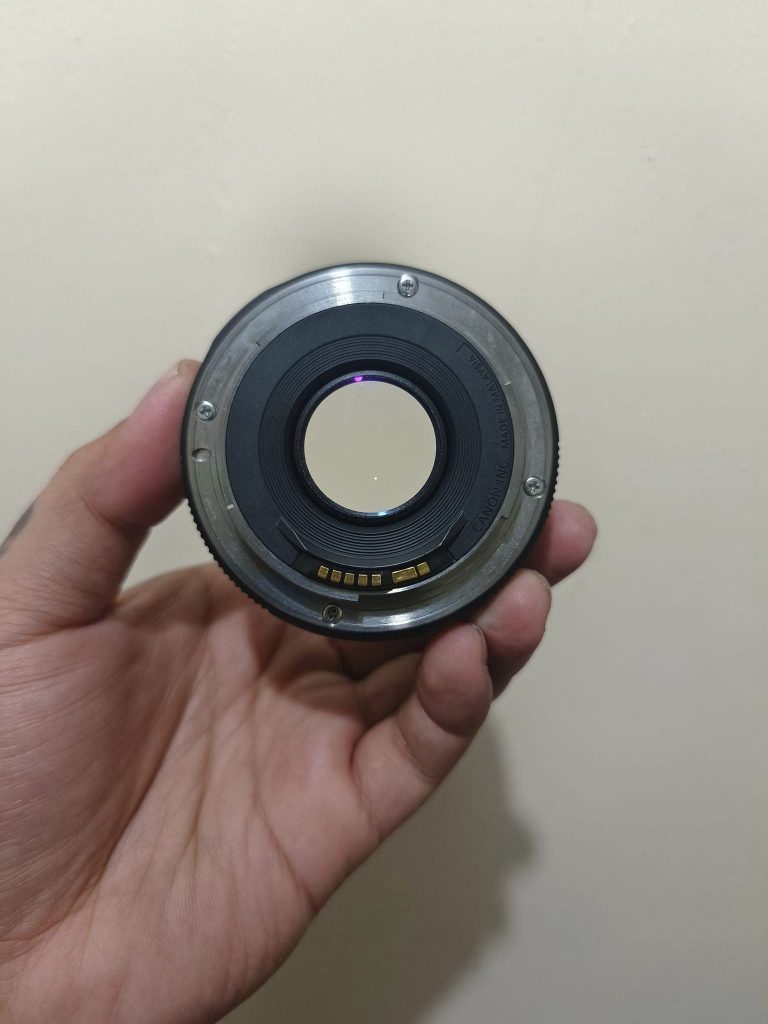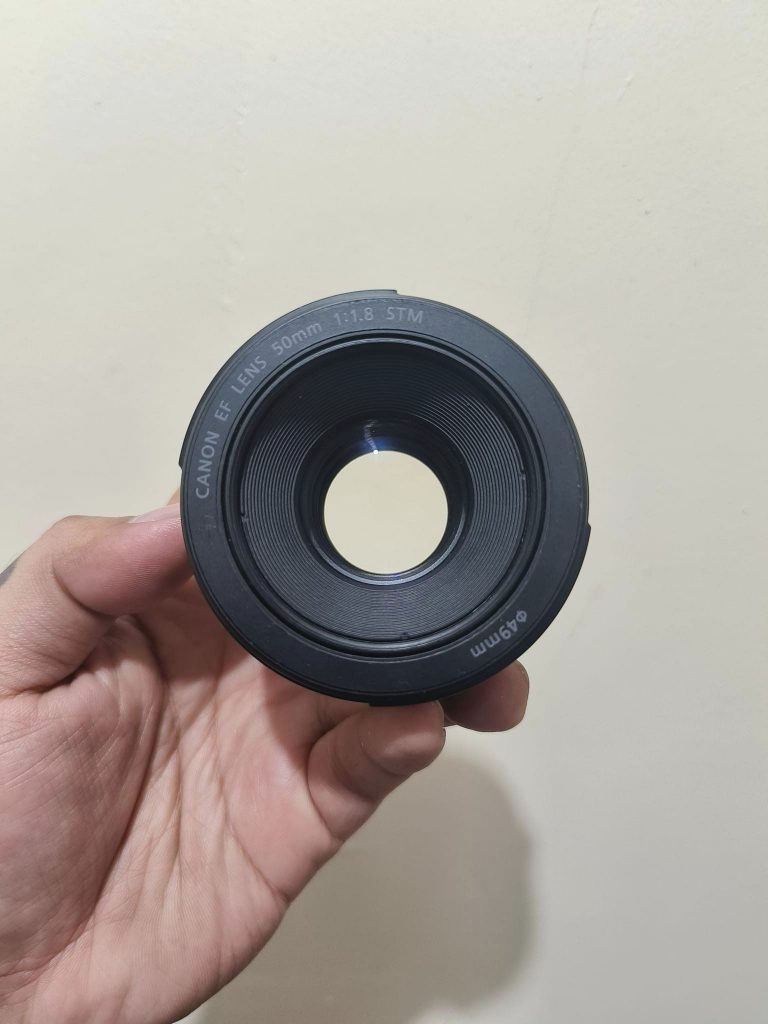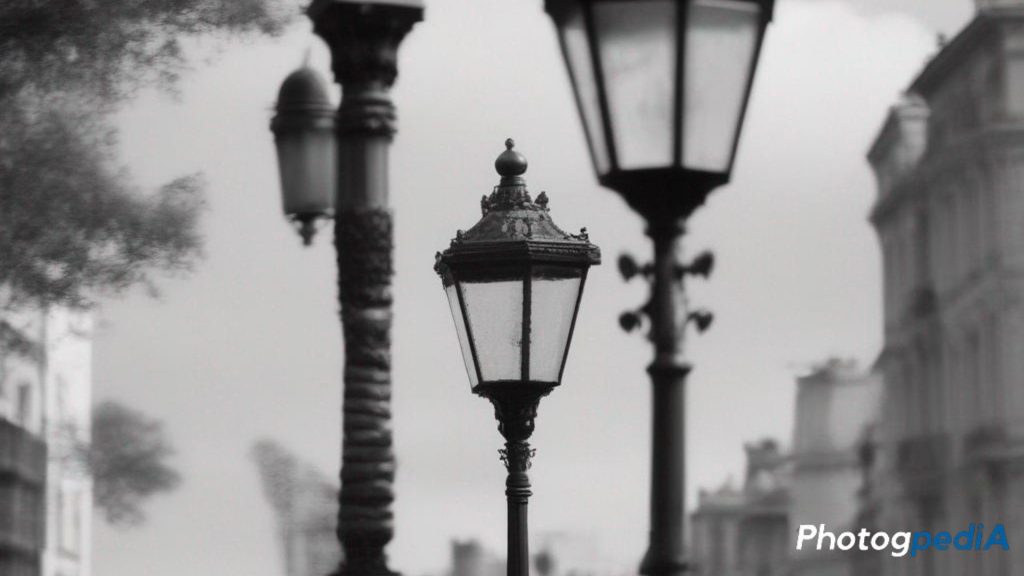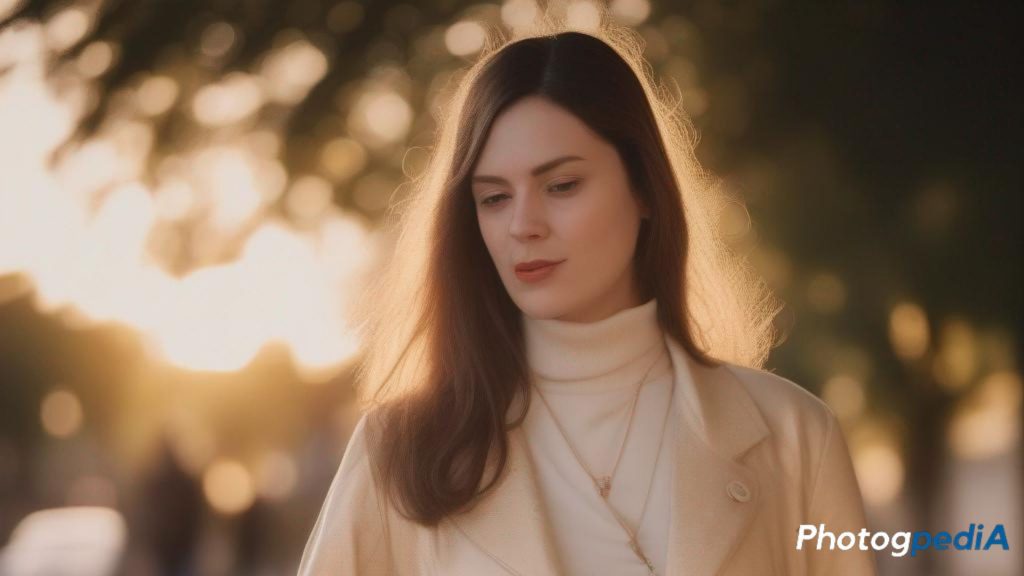In photography (and me personally), the 50mm lens holds a special place. It’s a workhorse that’s earned its respect, not just for its versatility and affordability, but also for the exceptional image quality it delivers. For any photographer, beginner or pro, mastering 50mm photography unlocks a world of creative possibilities. This article will be your guide, packed with 50mm photography tips and tricks to help you elevate your shots and truly understand the power of this classic focal length.
Table of Contents
From My Perspective
Initially, I spent a lot of time experimenting with zoom lenses. The convenience of framing a shot from afar or zooming in for close-ups was undeniable. But there was a lingering feeling that something was missing. My photos, while technically sound, often lacked a certain intimacy and storytelling quality.
That’s when I decided to delve into the world of prime lenses, specifically the highly recommended 50mm focal length. Truth be told, I was a little apprehensive at first. The idea of being limited to one focal length seemed restrictive. But their enthusiasm was contagious, and the affordability of 50mm lenses was certainly appealing.
Taking the plunge with a 50mm lens was a revelation. Suddenly, I found myself more engaged with the process of photography. I wasn’t just framing a shot; I was actively composing it, moving my feet, and considering the background in a way I hadn’t before. The fixed focal length forced me to become more deliberate with my approach, and the results were astonishing. My photos became more focused, with a stronger sense of subject and story.
Furthermore, the image quality of the 50mm lens blew me away. These lenses are often simpler in design, which often translates to superior sharpness, clarity, and even low-light performance compared to their zoom counterparts. I started capturing details I hadn’t noticed before, and the overall aesthetic of my photos took a significant leap forward. Without further ado, here’s my guide on 50mm photography tips and tricks.
Understanding the Basics: What is a 50mm Lens?
Before diving into the tips and tricks that will unlock the full potential of your 50mm lens, let’s establish a solid foundation in its core characteristics. The key to the 50mm’s magic lies in its focal length. Named for the distance between the optical center of the lens and the image sensor (around 50 millimeters), this focal length offers a field of view that closely mimics human vision. In simpler terms, the world you see through your viewfinder is very similar to what your eyes perceive naturally.
This translates to several advantages for your photography. Firstly, 50mm lenses produce images with minimal distortion. Unlike wide-angle lenses that can make backgrounds appear curved or telephoto lenses that compress perspectives, the 50mm lens renders scenes in a natural and balanced way. This is particularly beneficial for portrait photography, where you want to capture your subject’s features accurately without any unwanted warping.
Secondly, the 50mm focal length encourages a more deliberate approach to composition. With zoom lenses, it’s tempting to rely on zooming in or out to frame your shot. The fixed focal length of the 50mm lens, however, pushes you to move your feet and consider different perspectives. This can lead to more dynamic and engaging compositions that draw the viewer’s eye into the scene.
Finally, the simple design of 50mm lenses often translates to superior image quality. Because they have fewer elements compared to zoom lenses, they can achieve exceptional sharpness, clarity, and even better low-light performance. This makes them ideal for a wide range of photography styles, from capturing everyday moments to producing stunning portraits in available light.
Choosing the Right 50mm Lens: Prime vs. Zoom
When selecting a 50mm lens, you’ll encounter two primary options: prime and zoom. Prime lenses, as their name suggests, offer a fixed focal length of 50mm. Zoom lenses, on the other hand, provide a range of focal lengths within the lens barrel, allowing you to adjust your perspective without physically moving. While zoom lenses boast undeniable convenience, prime lenses reign supreme in the realm of 50mm photography for several key reasons.


Prime Lenses: Embracing Simplicity and Quality
Prime lenses are lauded for their simplicity and optical excellence. With a fixed focal length, these lenses nudge photographers to hone their composition and creative problem-solving skills rather than relying solely on zooming in and out. This constraint, however, serves as a springboard for a deeper understanding of photographic fundamentals. By actively moving your feet and considering different perspectives to frame your shot, you develop a stronger sense of composition, leading to more impactful and visually engaging photographs.
Benefits of using 50mm prime lenses:
- Superior Image Quality: Prime lenses often boast a simpler design with fewer elements compared to zoom lenses. This translates directly to exceptional sharpness, clarity, and even better low-light performance. With fewer elements manipulating light, there’s less chance of aberrations or distortion impacting the final image.
- Wider Maximum Apertures: Prime lenses typically offer wider maximum apertures, allowing more light to reach the camera sensor. In turn, this translates to faster shutter speeds in low-light situations and the ability to achieve a shallower depth of field. With a 50mm prime lens, you can create beautiful bokeh, the pleasingly blurred background that draws focus to your subject.
- Compact and Lightweight: The simpler design of prime lenses also makes them more compact and lightweight compared to zoom lenses. This is a significant advantage for photographers who value portability, especially when traveling or shooting for extended periods. Prime lenses easily slip into your bag, making them ideal for street photography, hikes, or capturing fleeting moments on the go.
- Affordability: Prime lenses are generally more affordable than zoom lenses of similar quality. This makes them a fantastic entry point for photographers looking to explore the world of prime lenses without breaking the bank. Their affordability allows you to experiment with different focal lengths and hone your skills without a hefty investment.
Leveraging Aperture: The Key to Stunning Bokeh
One of the most captivating among 50mm photography tips and tricks is the ability to achieve beautiful background blur, or bokeh. This dreamy effect is significantly enhanced by the wide apertures commonly found in 50mm prime lenses. By shooting at larger apertures, such as f/1.8 or f/1.4, you can create captivating portraits with a shallow depth of field. This translates to your subject standing out in sharp focus against a luxuriously blurred background, drawing the viewer’s eye directly to them.
Mastering Depth of Field: From Sharpness to Softness
Depth of field, the zone of focus in your image, plays a crucial role in shaping the visual impact of your photographs. With a 50mm lens, you gain exceptional control over depth of field, allowing you to isolate your subject and create compelling compositions. The magic lies in experimenting with different aperture settings.
- Wide Apertures for Selective Focus: Wider apertures, denoted by lower f-numbers (like f/1.8 or f/1.4), create a shallower depth of field. In this scenario, only a small portion of the scene, typically your subject, will be in sharp focus, while the foreground and background melt away into a beautiful blur. This technique is ideal for drawing attention to your subject and creating a sense of separation within the frame.
- Narrow Apertures for Enhanced Sharpness: Conversely, narrower apertures (represented by higher f-numbers) create a deeper depth of field. This translates to a larger portion of the image being in focus, from the foreground elements to the background. This approach is perfect for capturing landscapes, group portraits, or situations where you want everything within the frame to be sharp and clear.
Zoom Lenses: Versatility and Convenience
The beauty of a zoom lens lies in its adaptability. With a single lens, you can adjust the focal length across a range, allowing you to frame your shot precisely without needing to swap lenses. This is particularly beneficial for situations where you need to quickly adapt to changing environments or capture a variety of subjects at different distances.
While zoom lenses typically sacrifice some aperture capabilities compared to their prime counterparts, their flexibility makes them well-suited for various shooting scenarios. Here are some situations where a zoom lens might be your ideal companion:
- Landscapes: With a zoom lens, you can effortlessly capture the grandeur of a wide vista or zoom in on captivating details within the landscape.
- Travel Photography: Traveling light is often key, and a zoom lens eliminates the need to carry multiple prime lenses, allowing you to capture diverse subjects on the go.
- Portrait Photography: While prime lenses excel at creative portraiture with shallow depth of field, zoom lenses offer more flexibility for framing different portrait styles, from headshots to environmental portraits.
Ultimately, the choice between a prime lens and a zoom lens depends on your individual shooting style and priorities. If you prioritize image quality, creative control, and a lightweight setup, a prime lens like the 50mm is an excellent choice. If you value versatility, convenience, and the ability to adapt to various shooting situations, a zoom lens might be the better fit.
Practical 50mm Photography Tips and Tricks: Composition to Lighting
Now that you’re familiar with the basics of 50mm lenses, let’s explore some practical tips for maximizing their potential in your photography.

Perfecting Composition: Rule of Thirds and Beyond
Composition is the cornerstone of compelling photography, and it holds particular importance when working with a 50mm lens. This focal length encourages a deliberate approach to framing your shots, as you can’t simply zoom in or out to adjust the composition. Here’s where the rule of thirds comes in handy. This foundational technique involves dividing your frame into a 3×3 grid and placing your subject along the intersecting lines or at the grid points. By following this rule, you create a balanced and visually engaging composition that draws the viewer’s eye naturally.
However, composition extends beyond the rule of thirds. To truly elevate your 50mm photography, consider these additional elements:
- Leading Lines: Lines within your scene can guide the viewer’s eye towards your subject. Look for roads, fences, or architectural elements that lead the eye directly to your point of interest.
- Framing: Frame your subject creatively using doorways, windows, or foreground elements. This technique adds depth and context to your image.
- Negative Space: Don’t be afraid of empty space in your composition. Negative space can create a sense of balance and allow your subject to breathe.
Harnessing Natural Light: Golden Hours and Shadows
Lighting can make or break a photograph. When shooting with a 50mm lens, embracing natural light is often your best bet. Natural light offers a beautiful softness and versatility that’s unmatched by artificial sources.
One of the most beloved times for photographers is the golden hour. This magical period bathes the scene in a warm, soft light that’s ideal for portraits, landscapes, and capturing the essence of a place.
However, natural light isn’t limited to the golden hour. Don’t be afraid to experiment with different lighting conditions. Embrace harsh midday sunlight for high-contrast images or utilize shadows and highlights to add drama and dimension to your photographs.

Exploring Creative Angles: High, Low, and Everywhere in Between
Don’t be afraid to break free from the traditional eye-level perspective! With a 50mm lens, you have the freedom to experiment with different angles and perspectives. This simple act can breathe new life into familiar subjects and create unique and captivating images.
- Get Low: Lowering your camera to ground level can transform a scene into a dramatic landscape or add power to your portraits.
- Shoot High: Conversely, shooting from a high angle can create a sense of intimacy in portraits or offer a dynamic view of a bustling street scene.
The possibilities are truly endless when you embrace creativity and experimentation with angles. Challenge yourself to see the world from a new perspective, and your 50mm photography will undoubtedly flourish.
Conclusion: Elevate Your Photography with the 50mm Lens
In conclusion, the 50mm lens is a powerful tool for photographers seeking to elevate their craft. Whether you prefer the simplicity of a prime lens or the versatility of a zoom lens, the 50mm focal length offers endless opportunities for creativity and expression. By mastering these 50mm photography tips and tricks, you can unlock the full potential of this iconic lens and capture moments with precision and artistry.
FAQs (Frequently Asked Questions)
Is a 50mm lens good for portraits?
- Absolutely! The 50mm lens is a popular choice for portraits due to its natural perspective and ability to create beautiful background blur.
Can I use a 50mm lens for landscape photography?
- While not traditionally used for landscapes, a 50mm lens can still produce stunning landscape images.
What is the best aperture for 50mm photography?
- The best aperture depends on the desired effect and shooting conditions. However, many photographers find that shooting at wider apertures, such as f/1.8 or f/2.8, produces striking results.
Is image stabilization important for 50mm lenses?
- Image stabilization can be beneficial, especially when shooting in low-light conditions or using slower shutter speeds. However, it’s not essential for all photographers, particularly those who prioritize image quality and aperture capabilities.
Are 50mm lenses suitable for beginners?
- Yes, 50mm lenses are excellent choices for beginners due to their affordability, simplicity, and ability to produce high-quality images. They provide a great platform for learning the fundamentals of photography while still offering room for growth and creativity.
Mastering the Art of 50mm Photography: A Rewarding Journey
This comprehensive 50mm photography tips and tricks guide has equipped you with the knowledge and techniques to unlock the full potential of your lens. Remember, the journey of mastering photography is a continuous process filled with learning and exploration. As you practice and experiment with your 50mm lens, you’ll develop your unique style.
Dive Deeper:
To further refine your skills and explore the creative possibilities of your 50mm lens, check out these helpful resources:
- Mobile Photography Tips: Don’t underestimate the power of your smartphone camera! Explore these tips to elevate your mobile photography and capture captivating images on the go.
- Post-processing Tips: Even the best photographs can benefit from some post-processing magic. Learn essential editing techniques to enhance your photos, add a personal touch, and make them truly shine.
- Photo Pose Tips: Especially for portrait photography, mastering posing techniques can elevate your images significantly. Explore these tips to guide your subjects and capture flattering, natural-looking poses.
- Studio Lighting: Tips on Controlled Lighting Environments: If you’re interested in exploring more controlled lighting setups, this one’s for you. Mastering light will take your 50mm photography to a whole new level.
About the Author
Hi, I’m Mark – an amateur photographer that first started in 2020. I particularly capture action figures in miniature settings and dioramas. You can follow more of my work at the following social media channels:
- Instagram – iselandmarkventures
- Facebook – iselandmarkventures
- YouTube – The Iselandmarkventures

